
NPS In the first years after a major fire, new vistas appear while the lush growth of new, young trees emerges from the burned ground. Today, decades after the 1988 fires, those young trees are renewed forests, once again filling in vistas. Some visitors still feel the Yellowstone they knew and loved is gone forever. But Yellowstone is not a museum—it is a functioning ecosystem in which fire plays a vital role. 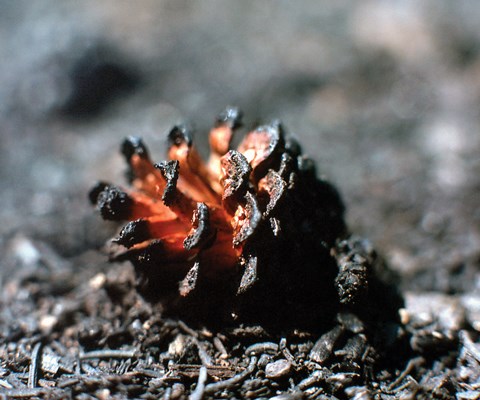
NPS Vegetation Some of the vegetation in the Greater Yellowstone Ecosystem has adapted to fire and, in some cases, is dependent on it. Some plant communities depend on the removal of the forest canopy to become established. They are the first to inhabit sites after a fire. Other plants growing on the forest floor are adapted to survive at a subsistence level for long periods of time until fires open the canopy. Fire creates a landscape more diverse in age, which reduces the probability of disease or fire spreading through large areas. One of the two types of cones produced by lodgepole pines, which make up nearly 80% of the park’s forests, is serotinous. Serotinous cones will not release their seeds until the resin sealing them melts, requiring a temperature of at least 113°F (45°C). This adaptation helps ensure the seeds do not disperse until fire creates conditions that favor the establishment of lodgepole pine seedlings: diminished litter on the forest floor and plenty of sunlight through an open canopy. Fire can limit trees in the meadows of Yellowstone. For example, Douglas-fir seeds require conditions that exist only in rare microhabitats in these meadows. If a seed reaches such a microhabitat during a favorable year, a seedling may develop. Once the tree is growing, it begins to influence the immediate environment. More tree habitat is created and a small forest island eventually appears. Periodic fire kills the small trees before they have a chance to become islands, thus maintaining the open meadow. The thick bark on mature Douglas-fir trees resists damage from surface fires. Historically, in areas like the park’s northern range, frequent surface fire kept most young trees from becoming part of the overstory. The widely scattered, large, fire-scarred trees in some of the dense Douglas-fir stands in the northern range are probably remnants of these communities. Although Engelmann spruce and subalpine fir have thin bark, they grow in cool, moist habitats where conditions that enable fires to burn are infrequent. In 1988, 28% of the park’s whitebark pine burned, though it grows in open, cold, high-altitude habitats that accumulate fuel very slowly and have only a short season between snowmelt and snowfall during which fires can ignite and carry. Caches of whitebark pine seeds collected by red squirrels and Clark’s nutcrackers and the hardiness of whitebark pine seedlings on exposed sites give this tree an initial advantage in burned areas over conifers dependent on wind to disperse seeds. However, this slow growing and long-lived tree is typically more than 60 years old before reaching full cone production, and young trees may die before reproducing if the interval between fires is too short or if faster-growing conifers outcompete them. Tree seedlings sprout and grow at variable rates between the surviving trees and the fallen and standing snags. As root systems of standing dead trees decay and lose their grip on the soil, the trees fall— sometimes hundreds at once in the presence of a strong wind. However, many trees remain upright for more than a decade after dying by fire or other cause. Fires may stimulate regeneration of certain species of shrubs and trees, but their growth is also affected by other influences such as climate and wildlife browsing. Aspen have thin bark, but the clones are connected by a network of underground roots that can survive even very hot surface and crown fires. Although the above-ground stems may be killed, fire stimulates the sprouting of suckers from the roots, and fire leaves bare mineral soil suitable for the establishment of aspen seedlings. Soils in Yellowstone that support little vegetation have been largely unaffected by fire. Soils that have dense, diverse vegetation before a fire are likely to respond quickly after the fire with a variety of species and nearly complete cover. Though above-ground parts of grasses and forbs are consumed by fire, the below-ground root systems typically remain unharmed, and for a few years after a fire these plants commonly increase in productivity because fire rapidly releases nutrients from wood and forest litter. The regrowth of plant communities begins as soon as moisture is available, which may be within days at some sites. 
NPS 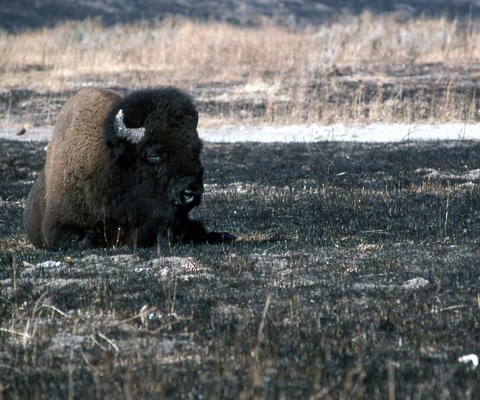
NPS WildlifeWildfires do not significantly affect the abundance of most wildlife species in Yellowstone. Relatively few animals died as a direct result of the large fires in 1988, and most of those deaths were caused by smoke inhalation. Of Yellowstone’s seven native ungulate species, only the moose experienced a population decline that appeared after 1988. Although moose population estimates are imprecise, it appears that with less willow and subalpine fir available for winter browse, and snow accumulating more deeply with many forest canopies gone, moose winter mortality increased in 1989. Mortality in all ungulate species was unusually high in the winter after the fires, but it is difficult to know how much of that was the result of burned forage rather than drought, large herd sizes, and the relatively severe winter. Elk, bison, and deer populations soon rebounded. Of the 38 grizzly bears wearing radio transmitters when the fires began, 21 had home ranges burned by one or more of the fires. Thirteen of those bears moved into burned areas after the fire front had passed, three adult females without young stayed within active burns as the fire progressed, three bears remained outside the fire perimeters, one adult female was not located for another two years, and another adult female was never located again at all. Large predators such as grizzly and black bears, cougars, and wolves simply move out of the way of a fire. Bears have been observed frequently grazing in burned areas after the vegetation has started to return due to the increase in vegetation in years following a fire. Even the fires in 1988 had no discernible impact on the number of grizzly bears in the Greater Yellowstone Ecosystem. Rodents probably have the highest fire-related mortality of any mammals. Although many can escape fires in burrows, they can die of suffocation as fires come through. They also become more exposed to predators because they temporarily lose the cover of grasses and other plants. But, because of their capacity to have multiple litters with many young per year, rodents quickly repopulate burned areas. Most birds are not directly harmed by fires, and some benefit. Raptors hunt rodents fleeing a fire, but young still in their nests may die. Post fire habitat changes help some birds. Cavity-nesting birds, such as Barrow’s goldeneye, flickers, and bluebirds have many dead trees for their nests. Robins and flickers find ants and worms more easily. Boreal owls, however, may lose some of the mature forests they need. 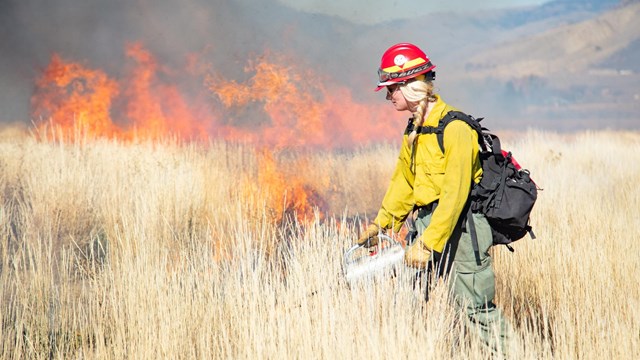
Fire Management
Learn how the park balances the benefits and threats of fire on the landscape. 
Current Fire Activity
A list of active fires in the park. 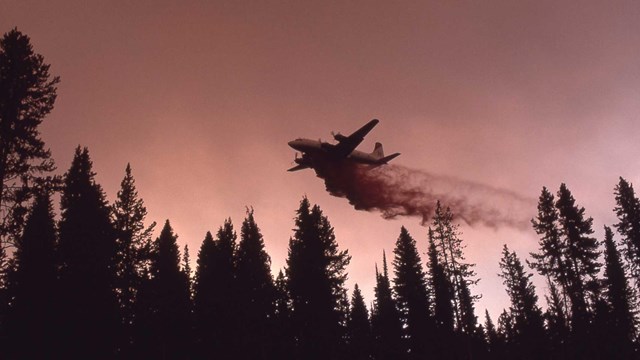
The 1988 Fires
The 1988 fires affected approximately 800,000 acres (or ~36%) of the park. 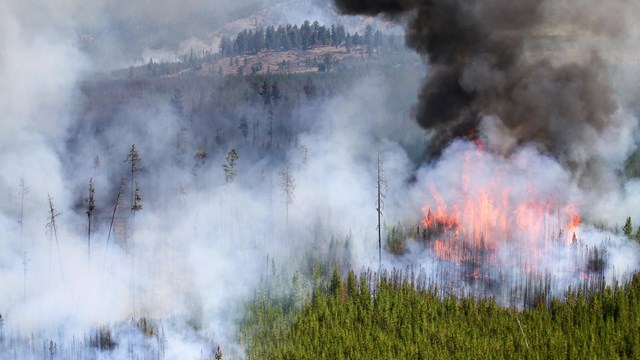
Fire Ecology
Learn about fire's role in Yellowstone. 
Nature
Discover the natural wonder of Yellowstone, from the geology beneath the plant communities to the animals migrating through the ecosystem. |
Last updated: April 22, 2025
